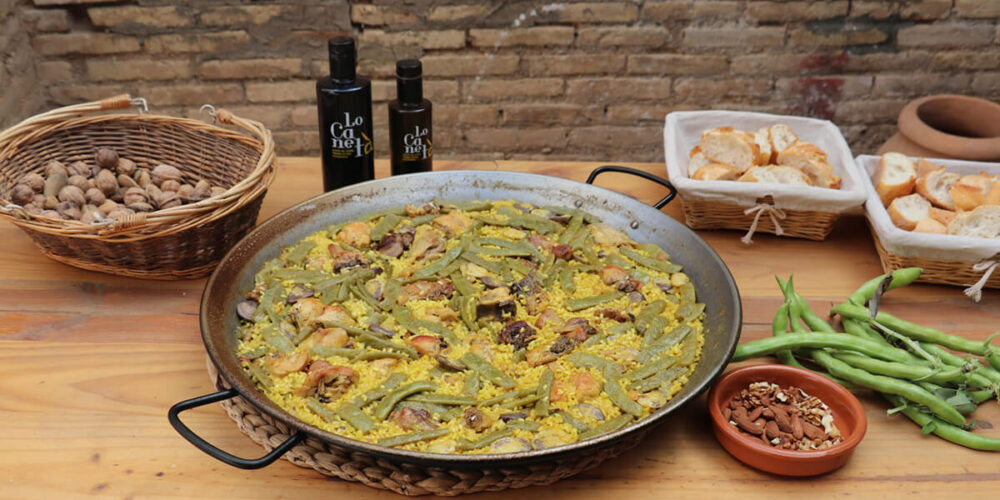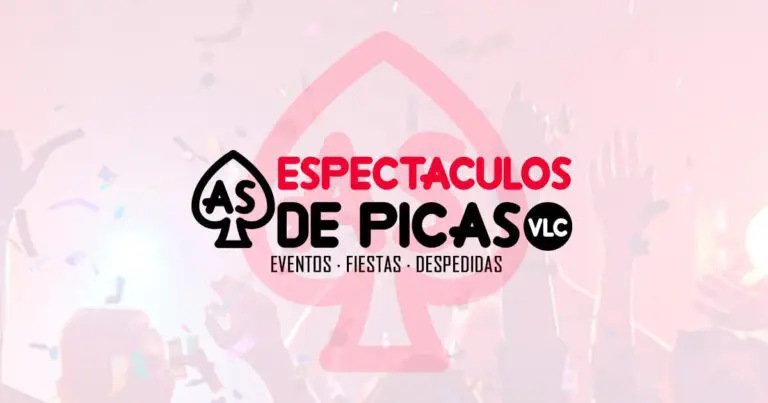We will explore the secrets of this delicious recipe and the best options to learn how to cook it like an expert.
Paella Valenciana is a culinary treasure from Spain that has conquered hearts around the world. Its combination of unique flavors and its traditional preparation make it an internationally renowned dish. In this article, we will take you on a journey through the authentic traditional Valencian Paella, how is it made? and where you can learn to prepare it yourself.
Index
ToggleTraditional Valencian Paella: What is it?
Paella Valenciana is a typical dish from the Valencia region, on the east coast of Spain. It is characterized by being a delicious combination of rice, rabbit, chicken, garrofón (a variety of broad bean), tomato, green beans, olive oil and, of course, saffron, which gives it its distinctive color and flavor. Cooked in a paella pan, a wide, flat pan, this recipe is a true feast for the senses.The Ingredients: The Essence of Valencian Paella
The basis of a good Paella Valenciana lies in the choice of quality ingredients. Here is a list of what you need:- Rabbit: Provides a distinctive flavor and softness to the meat.
- Chicken: Adds a tender, juicy texture.
- Garrofón: Similar to broad beans, but larger and with a unique flavor.
- Tomato: Provides a touch of acidity and sweetness.
- Green bean: Adds a touch of freshness and color.
- Olive oil: The base for the initial frying of the ingredients.
- Saffron: The magical ingredient that gives color and flavor.
- Paprika: Offers a smoky and spicy touch.
- Poultry broth: Essential to cook flavored rice.
- Rice: We use short grain rice, like Bomba rice, for the perfect texture.
Step by Step Preparation
The preparation of La Paella Valenciana is a masterpiece of Spanish cuisine. Here are the basic steps:- Ingredients Preparation : Cut the rabbit and chicken into small pieces and season them with salt and pepper. Wash the rice and let it drain. Peel and cut the tomato into cubes.
- Initial Sauté : In the paella pan, heat olive oil and fry the rabbit and chicken until golden brown. Then, add the tomato and paprika, cooking them until they break down.
- The Magic Saffron : Add the saffron to the sauce and mix it well to release its flavor and color. This is one of the best kept secrets of La Paella Valenciana.
- Rice and Garrofón : Add the rice and garrofón to the paella pan, mixing them with the other ingredients for a few minutes.
- The Poultry Broth : Pour the hot poultry broth over the mixture. Make sure it is evenly distributed in the paella pan.
- Slow and Even Cooking : Cook over medium heat for approximately 20-25 minutes, without stirring. This is the time when the rice will absorb all the flavors.
- La Socarrat : Increase the heat during the last few minutes so that the rice forms a golden, crispy layer on the bottom, known as “socarrat.”
- Let Rest : Remove the paella pan from the heat and let it rest for a few minutes before serving. This will allow the flavors to blend perfectly.
Valencian Paella Workshops: Learn from the Masters
Do you want to perfect your skills in preparing La Paella Valenciana? Workshops are the answer. Here you have some options:
1. Valencia Gourmet Cooking School
This school offers authentic Valencian cooking workshops, including Valencian Paella. You will learn from local chefs in a welcoming and friendly environment. An unforgettable culinary experience!
2. Online video tutorials for Paella Valenciana
If you prefer an at-home experience, you can learn this recipe in the numerous videos on YouTube, where the chef will guide you through each step, from the preparation of ingredients to the last bite. It is always better to choose an in-person workshop, because you will have the opportunity to answer your questions, you will be able to touch, smell and feel live. And of course, it is the best way to learn to cook.
3. Traditional Valencian Paella Workshop
This workshop takes place in the Valencian garden in the chef’s own house, they will teach you how the ingredients are grown, they will teach you how to make this recipe in great detail, it is specialized in teaching the traditional techniques of making paella. You will learn the secrets of authentic paella from experts, and in a homemade and authentic environment.
If you want to learn and be a good host, the paella workshop is the best choice
Valencian paella · FREQUENTLY ASKED QUESTIONS
1. ¿Puedo sustituir el conejo o el pollo por otra carne?
Sí, puedes experimentar con diferentes carnes, pero ten en cuenta que el sabor será diferente. La combinación tradicional es insuperable.
2. ¿Qué tipo de arroz es el mejor?
Para una auténtica Paella Valenciana, usa arroz de grano corto, como el arroz bomba o el Calasparra. Absorben bien el caldo y mantienen su textura. Pero en la huerta de Valencia se plantan otras variedades tradicionales como el Albufera o el Senia, que por tener menos almidón y otras cualidades, dicen que son los arroces más idóneos para la Paella Valenciana.
3. ¿El garrofón es necesario?
El garrofón es una parte esencial de la receta tradicional, es una alubia pero si no puedes encontrarlo, puedes sustituirlo por judías verdes. Y dentro de las variedades del garrofón, el preferido para la receta tradicional es el que es el 'pintat', el de la 'cella negra' i el d'ull de perdiu, sobre todo por sus propiedades organolépticas, el sabor, color y textura característica de esta receta.
4. ¿Puedo hacer paella vegetariana?
Claro, puedes omitir la carne y el caldo de ave, utilizando caldo de verduras. También puedes añadir verduras de tu elección. Pero esta variedad no se puede denominar como paella Valenciana
5. ¿Cuál es el secreto para obtener un buen socarrat?
El secreto es mantener el fuego alto durante los últimos minutos de cocción sin revolver. Esto crea esa capa dorada, crujiente y muy sabrosa en la parte inferior del arroz. Es normal que parte del arroz se quede pegado a la paellera si nos hemos pasado de cocción.
6. ¿La Paella Valenciana es difícil de hacer para principiantes?
No es difícil, pero requiere práctica para perfeccionarla. Lo ideal es en primer lugar tener ingredientes de buena calidad, a poder ser de km0, guardar bien las proporciones de carne, arroz y agua, y hacer un buen sofrito. ¡No te desanimes si la primera vez no sale perfecta!
7. ¿Paella Valenciana o Arroz en paella?
La Paella Valenciana tradicional es una receta con unos condimentos determinados, y todo lo que se sale de ahí no se puede llamar "Paella Valenciana", sino más bien "Arroz en Paella". Dado que no exime que la recete esté buena de sabor, pero el resto de variantes e invenciones, son arroces que se cocinan en una "paellera", pero no es la receta tradicional.
8. Paella o Paellera
Hay que diferenciar lo que es una "Paella" de una "Paellera". Porque la Paella es una receta y la Paellera es el caldero donde se cocina la paella. Aunque es muy habitual que al caldero se le denomine por error "paella".
9. Paella con o sin Romero
El romero es un ingrediente que se suele poner por encima del arroz, pero no se recomienda porque por su intensidad, aunque es muy típico y enmascara el verdadero sabor. De hecho, en los concursos de paella nunca se utiliza.
Conclusion
Traditional Valencian Paella is a delicious masterpiece of Spanish gastronomy. Preparing it is a culinary journey worth taking. Whether you choose to learn how to make it at home or in a workshop, the experience will be unforgettable. So what are you waiting for? Put on your apron and start cooking your own traditional Valencian Paella today!

